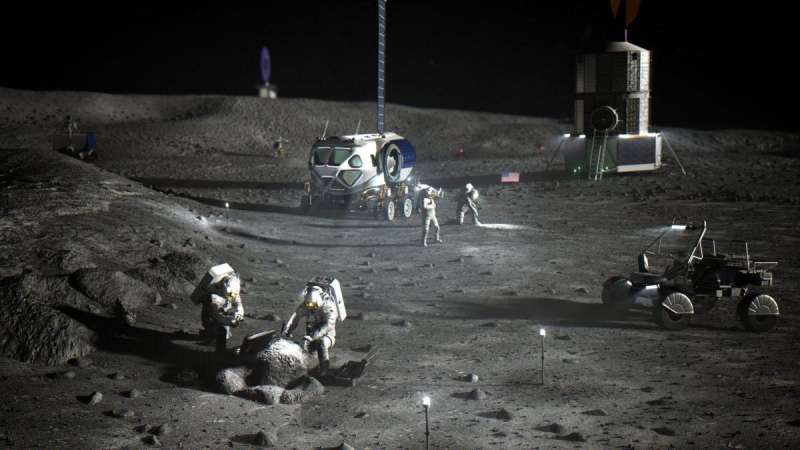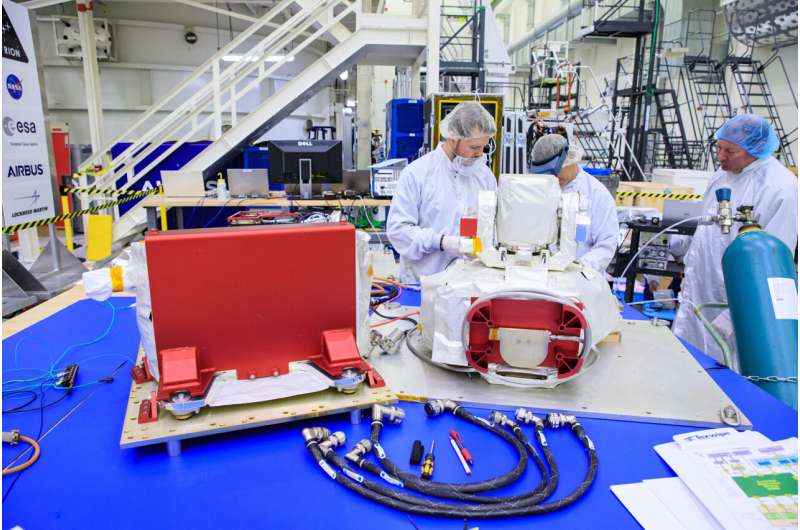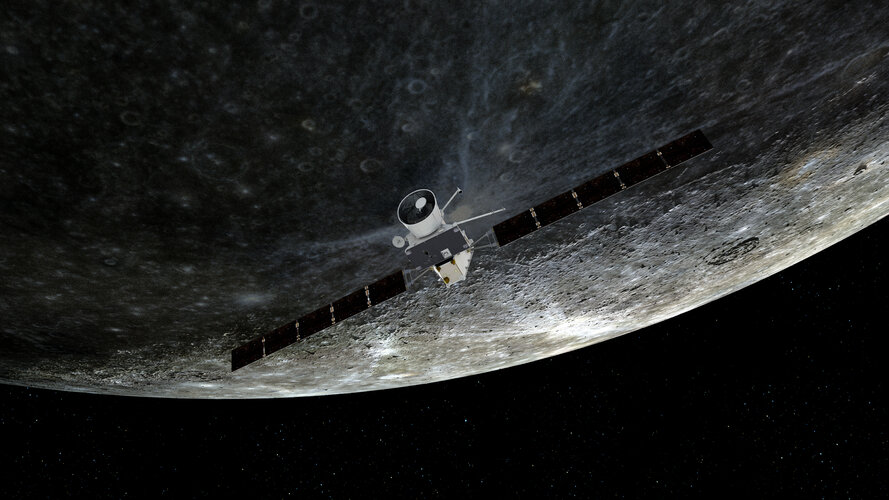
Copernical Team
Astronauts will be tracking dust into the Lunar Gateway. Is this a problem?

Lunar regolith (aka. moondust) is a major hazard for missions heading to the moon. It's everywhere on the surface—5 to 10 meters (~16.5 to 33 feet) in depth in some places—not to mention jagged and sticky. During the Apollo missions, astronauts learned how this dust adhered to everything, including their spacesuits. Worse, it would get tracked back into their lunar modules (LMs), where it stuck to surfaces and played havoc with electronics and mechanical equipment, and even led to long-term respiratory problems.
This is a major concern for the Artemis Program, which aims to establish a "sustained program of lunar exploration and development." One of the key elements of this program is the Lunar Gateway, a lunar habitat that will orbit the moon for a planned 15 years and facilitate long-term missions to the surface.
Foldable phased-array transmitters developed for lightweight, smaller, and cost-efficient satellites

A newly designed foldable phased-array transmitter can help make satellites lightweight, smaller, and cost-efficient to launch, report scientists at Tokyo Tech. The transmitter is made of stacked layers of liquid crystal polymer and incorporates flexible creases, which provide flexibility and deployability. The new design could make research and implementation of space technologies more accessible to private companies and startups.
There has been a recent shift in the space industry towards what is now called the "new-space era." The term refers to how space is no longer dominated exclusively by government agencies such as NASA but has instead become a playground for many private companies and startups interested in exploring and deploying space technologies.
NASA laser communications terminal delivered for Artemis II moon mission

The laser communications system for NASA's Artemis II mission arrived at NASA's Kennedy Space Center in Florida for integration with the Orion spacecraft, which will carry astronauts around the Moon for the first time since the Apollo missions.
On November 16, 2022, NASA launched the Artemis I mission, an uncrewed flight test that took the human-rated Orion spacecraft farther into space than any before. The next mission, Artemis II, will test all of Orion's systems needed for crewed spaceflight and set the stage for future missions to the lunar surface. The Artemis II mission will also test new and enhanced technologies including laser communication capabilities.
Orion's laser communications terminal is known as the Orion Artemis II Optical Communications System, or O2O.
Laser communications systems, like O2O, provide missions with increased data rates, meaning they can send and receive more information in a single transmission compared to traditional radio wave systems, which most NASA missions use today.
Unlocking early Earth chemistry
 Billions of years ago, Earth was an extremely hostile planet with active volcanoes, a harsh atmosphere, and certainly no life! This prebiotic Earth, however, was filled with a wide array of abiotic organic molecules derived from its early environment, which underwent chemical reactions that eventually led to the origin of life. A class of such abiotic molecules abundant during the prebiotic era
Billions of years ago, Earth was an extremely hostile planet with active volcanoes, a harsh atmosphere, and certainly no life! This prebiotic Earth, however, was filled with a wide array of abiotic organic molecules derived from its early environment, which underwent chemical reactions that eventually led to the origin of life. A class of such abiotic molecules abundant during the prebiotic era ExLabs awarded Space Force contract for robotic capture system
 Exploration Laboratories, ExLabs announces it has been selected by SpaceWERX for a Direct-to-Phase II SBIR contract in the amount of $1.7M, focused on Autonomous Capture and Acquisition to investigate its potential to fill capability gaps in the Department of the Air Force (DAF).
The Air Force Research Laboratory and SpaceWERX have partnered to streamline the Small Business Innovation Rese
Exploration Laboratories, ExLabs announces it has been selected by SpaceWERX for a Direct-to-Phase II SBIR contract in the amount of $1.7M, focused on Autonomous Capture and Acquisition to investigate its potential to fill capability gaps in the Department of the Air Force (DAF).
The Air Force Research Laboratory and SpaceWERX have partnered to streamline the Small Business Innovation Rese Forecasting fires with SMOS

As the current wildfires in Canada show, climate change is increasing the risk and extent of wildfires across the globe. ESA, along with the European Centre for Medium-Range Weather Forecasts have taken a new approach by using realtime observations from ESA’s Soil Moisture and Ocean Salinity satellite mission to better anticipate the outbreak of fires.
BepiColombo braces for third Mercury flyby

The ESA/JAXA BepiColombo mission is gearing up for its next close flyby of Mercury on 19 June, when it will pass the planet’s surface at an altitude of about 236 km.
Ariane 5 flight VA261: follow the launch

Europe’s Ariane 5 rocket is being prepared for its final flight. You can follow the launch live on ESA Web TV. Flight VA261 will lift off as soon as 16 June at 23:26 CEST, pending suitable conditions for launch.
Broadcast begins 22:55 CEST/21:55 BST on ESA Web TV
Liftoff scheduled for 23:26 CEST/22:26 BST/21:26 UTC/18:26 Kourou
Discharge test for launcher antenna
 Image:
Discharge test for launcher antenna
Image:
Discharge test for launcher antenna Satellogic earth observation constellation continues expansion with SpaceX Transporter-8 Mission
 Satellogic Inc. (NASDAQ: SATL), reports that four NewSats Mark-V spacecraft successfully reached low-Earth orbit following a SpaceX Falcon 9 launch on June 12th from Vandenberg Space Force Base in California. This marks Satellogic's 15th mission and its first payload comprised exclusively of its latest generation spacecraft with advanced Earth Observation ("EO") capabilities.
Each spacecra
Satellogic Inc. (NASDAQ: SATL), reports that four NewSats Mark-V spacecraft successfully reached low-Earth orbit following a SpaceX Falcon 9 launch on June 12th from Vandenberg Space Force Base in California. This marks Satellogic's 15th mission and its first payload comprised exclusively of its latest generation spacecraft with advanced Earth Observation ("EO") capabilities.
Each spacecra 
